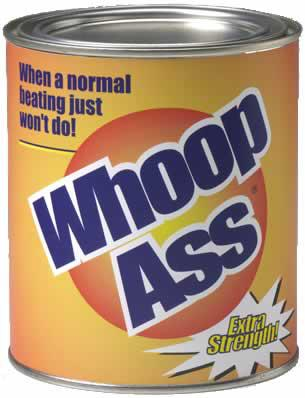 There are two different ways to analyze commercial loan production - the total dollar volume of commercial real estate loans and the number of individual commercial real estate loans made. From now on, whenever I say "commercial loans" I really mean "commercial real estate loans".
There are two different ways to analyze commercial loan production - the total dollar volume of commercial real estate loans and the number of individual commercial real estate loans made. From now on, whenever I say "commercial loans" I really mean "commercial real estate loans".
In terms of total dollar volume of commercial loans, the life companies, the conduits, and the ten largest money center banks combined probably originate about 60% of all commercial loans. This makes sense. These behemoths make the really huge commercial loans - the deals over $5 million. Commercial loans of $40 million+ are not unusual for these Big Boys.
However, in the land of mortals, where you and I reside, the small banks (under $1 billion in assets) and the regional banks (under $30 billion in assets), make the vast majority of individual commercial loans; i.e., they make the largest number of commercial loans. In plain English, small banks and regional banks make thousands and thousands of small balance commercial loans. A small balance commercial loan is one that is less than $5 million.
In contrast, the life companies, the conduits, and the money center banks combined might only make a paltry 600 major commercial loans in an entire year. Therefore small banks and regional banks are where you and I will place most of our commercial loans.

I have also often told you that you must match the size of your commercial loan request to the size of the bank. In other words, take your small commercial loans to small banks and your large commercial loans to large banks.
It also helps immensely to bring your commercial loans to the banks located close to the subject property. Most banks greatly prefer to lend in their own backyard; i.e., to make local loans.
To find the perfect lender for a commercial loan, I like to go to maps.yahoo.com and type in the address of the commercial property that I am trying to finance. The property will be flagged on a map. Then in the field entitled "Find a Business", I type in "Banks". Yahoo will then plot all of the banks and credit unions (credits unions love commercial loans these days) located close to the subject property. I then submit my deal to these local banks.
"Okay, George, that all sounds great and everything, but how on earth am I going to know the size of a particular bank? Let's suppose I'm doing a commercial loan in far off Arkansas, and the Bank of Arkansas shows up as having a branch close to my property. Is the Bank of Arkansas a small bank or a large regional bank? Will my commercial loan request be too large?"
To find the size of any commercial bank, simply go to BankFind, a wonderful tool developed by the FDIC. Type in the name of the bank and then press "Search". When the bank comes up, click on the Financials tab to see the asset size of the bank. Be sure to bookmark this great tool right now.

We are now finally getting to the point of today's training article. Regulators want banks to have a diverisified portfolio of loans, not just one giant loan upon which the bank rests all its hope. Can you imagine the risk to the financial system if a $250 million bank were to make a single loan of $250 million on an office tower in New York City? Banks are therefore limited as to the size of any single commercial loan that they can legally make.
It is much easier to place a commercial loan if the loan amount is well below that bank's maximum loan size limit; otherwise the Board of Directors will be wringing its hands and demanding an absolutely perfect loan. In the history of mankind, there has never been an absolutely perfect commercial loan.
So what is the maximum commercial loan size that any particular bank can make? It all depends on the asset size of the bank. The assets of a bank are its cash on hand, its cash on deposit with the Fed, and its investments, which includes all of its outstanding loans. As I have shown you above, you can easily find the asset size of any commercial bank in America using BankFind. By the way, the liabilities of a bank are its customer deposits, which have to be paid back upon request.
Now Federal regulators require a bank to have a capital account equal to at least 6% of assets, and most banks enjoy a capital account of between 6% to 8% of assets. The capital of a bank is the sum of the dough the founders originally put into the bank plus all of its accumulated retained earnings (profits that the bank has made and not yet sucked out). A well-run bank operates fairly close to that 6% number because it maximizes the profit to the stockholders.
Example: The Bank of Arkansas has $250 million in assets (found on BankFind). What is its minimum capital?
Minimum Capital = Total Assets x 6%
Minimum Capital = $250,000,000 x 6%
Minimum Capital = $15,000,000
Hilarious note: I picked the name Bank of Arkansas out of the blue, but it turned that there really was a Bank of Arkansas. Unfortunately, probably during the Great Recession, the bank took so many losses that its capital dipped below 6% of assets. The Feds closed the bank down!
Just in case you've forgotten, we're trying to find out the largest loan that the Bank of Arkansas is allowed to make. This is a gross simplication, but in general, the maximum loan that any bank can make to a single borrower is 15% of its capital.
Example: To find out the largest loan that the Bank of Arkansas can make, assuming it hadn't crashed and burned during the Great Recession:
Maximum Legal Loan Size = Bank Capital x 15%
Maximum Legal Loan Size = $15,000,000 x 15%
Maximum Legal Loan Size = $2,250,000
Therefore, if you needed a $3 million commercial loan, you would probably wouldn't apply to the Bank of Arkansas. In practice, I would limit the size of my commercial loan request to just 60% of a bank's maximim loan size limit; otherwise the Board of Directors is likely to be all freak-deaky, picking at every flaw.
It's time for you to finally learn commercial real estate finance. You can learn most of it in one long day (9 hours).
If you can't afford $549, you should at least download my free $199 Commercial Mortgage Underwriting Manual. All you have to do is register on C-Loans.com. (Once you've registered, you're far more likely to enter your next commercial loan into C-Loans.com)
Be sure to save the business card of any banker you meet who makes commercial loans. You can parlay the contents of that business card into a free directory of 2,000 commercial lenders. (We solict these guys to refer their turndowns to C-Loans.com.)
Need a commercial loan? Why not submit it to the hungry 750 commercial lenders on C-Loans.com?
Learn something today? Never miss another article:
I genuinely appreciate Facebook shares, Linked-In shares, Google Plus Ones, and Twitter Re-Tweets. Thanks!








